Jumping for Kids: Activities, Toys & Milestones

This post may contain affiliate links; please see our terms of use for details.
- As a milestone, jumping is the ability to push off from the ground into the air with two feet and land without falling.
- Most children learn to jump between 18 and 36 months of age.
- The coordination and strength needed to jump make it a foundational gross motor skill that helps develop strength, coordination, and sensory systems.
Jumping can be a blast to learn, literally. Ever wonder why people jump for joy or take a leap of faith? It’s because jumping can take all that positive mental energy we have stored up and give it a sense of freedom and physical expression.
When I think of kids happily playing, jumping in some form or another is involved. But don’t think jumping is just a chance to play. For kids, jumping is also a fantastic way to build physical fitness, provide sensory input, and give them the building blocks to play games and sports with other children.
6 Reasons Why Jumping is Good for Kids
Aside from being fun, jumping has other benefits for kids. Here are just a few reasons why jumping is good for kids. Jumping:
- Builds strength and power.
- Improves bilateral coordination skills.
- Is an important foundational skill for many games and sports.
- Builds confidence.
- Develops the vestibular system.
- Provides proprioceptive input and can build sensory motor skills.
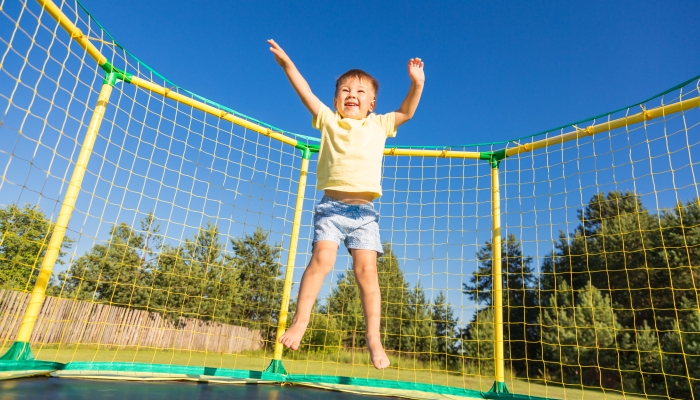
5 Jumping Games for Kids to Enjoy
If your child needs a bit of encouragement to practice jumping, here are some fun games and activities you can try:
1. Hopscotch
Needing only a piece of chalk and a flat surface, hopscotch is a fun game to teach your child to expand their jumping skills. Draw connecting squares, one or two together, in a row and challenge your child to jump into every square without skipping any or reverting to walking.
This game will work on the coordination of jumping from one foot to two and vice versa and the endurance to jump many times in a row.
2. Obstacle Course
I like to incorporate jumping as part of a larger obstacle course that addresses other skills like balance, throwing, catching, running, etc. However, you could make a small obstacle course just focused on different jumping skills.
Try some of these components and change up your course each time: place targets on the ground measured to the distance you want your child to jump (e.g., 24 or 36 inches), place a bell up high for them to jump and hit with their hands, and place small, sturdy benches or stools for them to jump down from.
Sometimes kids need further encouragement, in which case I will have them bring puzzle or game pieces through the obstacle course or make up a scenario like we are trekking through the jungle. The goal here is to make jumping into play and to help children forget they are working.
3. Animal Jumps
Monkey Jumps: Have your child start with both hands and feet on the floor and have them push off straight up into the air. This is a good exercise for kids who may be afraid to jump from a standing position.
Frog Jumps: For this activity, start with a low squat and have your child leap up and forward as far as possible. Frog jumps require much more explosive strength than regular jumping due to the low start position, so this is a great way to build power in your child’s legs.
Bunny Hops: Start in the same position as a frog jump but instead of going for distance, see how quickly your child can jump. This is an excellent activity for a friendly race between the child and parents, other kids, or little ones at home.
Kangaroo Jumps: Encourage your child to jump vertically as high as possible starting from a normal standing position.
4. Duck Walks
Duck walks are silly looking but a lot of fun! Just squat down and walk forward. Don’t forget to flap your wings and quack! This activity builds strength in your child’s legs, feet, and ankles.
5. Toe Raises
The take-off in jumping requires pushing off from the toes. Try simple toe raises to help your child strengthen their feet, toes, and ankles while balancing. You may hold a favored toy high above their heads and have them reach up to take it from you.
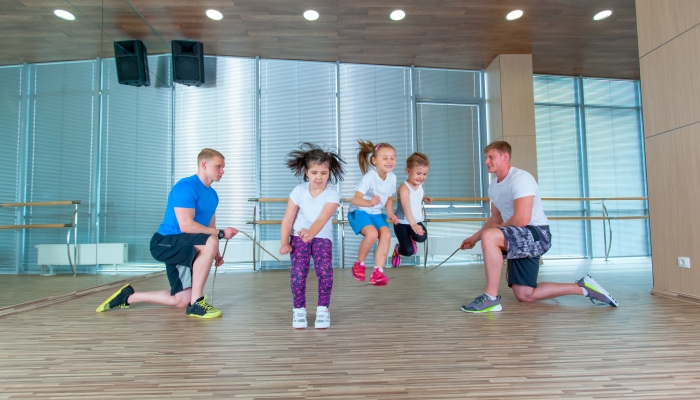
5 Toys to Encourage Kids to Jump
Try some of these toys to encourage your child’s jumping skills:
1. Trampoline
The trampoline is the most common tool used to help kids jump since the springy surface and handrails provide support and take some of the difficulty out of jumping while still providing the exact sensation kids associate with this skill.
Teach your child the idea of jumping by putting your hands on their hips and bouncing them up and down. They will quickly take over and start bouncing all by themselves. When they are ready, demonstrate how to bounce hard enough to lift their feet off the ground or help lift them into the air if they are scared to do it alone.
2. Jump Rope
Jump ropes can be used as a stationary obstacle fixed at a specific height or used traditionally to play jumping games. Either activity is great practice, but jumping games would be best as an advanced jumping skill.
3. Rocker Board
No products found.
Jumping requires a surprising amount of motion, stability, and strength in the feet and ankles. More likely to be seen in the therapy gym than at home, rocker boards are great toys to work on balance and ankle strength.
Place your child in a position so their toes go up and down while balancing. Hold onto their hands at first until they no longer need assistance. Once they are comfortable balancing, you can add additional challenges like tossing a bean bag or playing Simon Says.
4. Therapy Ball
Bouncing your child on a physioball provides similar vestibular input to jumping and may get your child comfortable with the motion—especially if they have gravitational insecurity, or anxiety related to balancing or being off the ground.
5. Ball Pit
Jumping down can be so scary for little ones! A ball pit can take some of the fear away and make your child more comfortable with this jumping skill. After they practice jumping into a ball pit, gradually transition to having them jump down from small heights to practice their landing.
Jumping for Kids Milestones: How Do They Learn to Jump?
Kids tend to hit initial jumping milestones in the early toddler or childhood years. Standing and walking are achieved first, and running often develops around the same time as jumping.
Though baby jumpers are popular pieces of baby equipment, they are not necessary for teaching a child to jump and instead serve other purposes. Jumping skills typically don’t emerge until 18–36 months of age, and spending too much time trying to teach an infant to jump may even interfere with the normal development of standing, cruising, and walking.
If your infant bounces constantly when bearing weight through their legs, this is a sign that they are spending too much time in a jumper or being bounced by an adult. However, if your toddler occasionally stops to bounce their knees while walking around, this is a good indication they are appropriately preparing to learn how to jump.
Other important movements that contribute to jumping are the abilities to come up onto the toes without losing balance and to squat and return to standing. These movements indicate that your child will have the strength and coordination to jump up into the air.
Jumping as a milestone is reached when your child can push off from the ground with both feet at the same time and land back down with both feet at the same time without the help of an adult. Both feet need to fully leave the ground for the movement to be considered a true jump. Children should learn to jump straight up in the air, forward, down, and side to side.
As your child’s jumping skills improve, the distance they can jump will increase and eventually they will be able to jump on one foot, or hop. Jumping on one foot requires more strength and balance than jumping on both feet, so that is a skill that emerges later, usually between three and four years of age.
How to Tell if Your Kid Has Trouble Jumping
If you have concerns about your child reaching gross motor milestones like jumping, contact their primary care provider. Your child may be referred to a pediatric physical therapist who can help them to learn jumping and other motor skills.
Your child may have difficulty jumping if:
- Their feet don’t fully leave the ground when attempting a jump.
- Their feet land back down one after the other instead of two feet together.
- Your child falls whenever attempting to jump.
- They show signs of gravitational insecurity. This may look like fear of heights, jumping, ascending or descending stairs, swinging, being picked up, etc.
- After the initial jumping milestone is achieved, they don’t learn to jump longer distances. Small children four years of age should be able to jump 24-36” forward and begin to jump over low obstacles without falling.
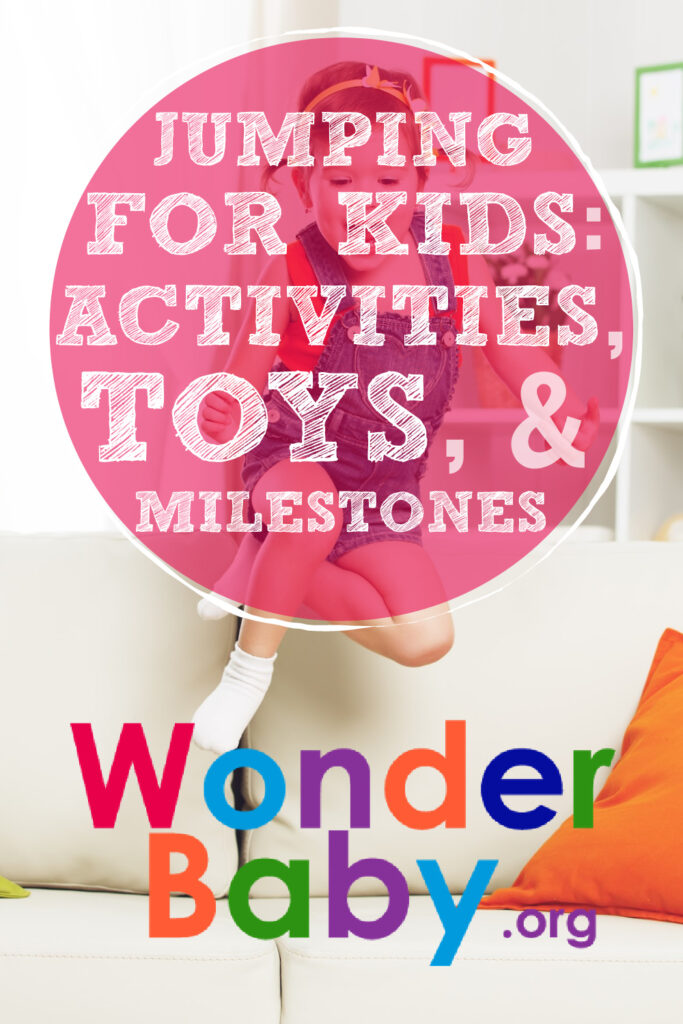
The information WonderBaby provides is not intended to be, and does not constitute, medical or other health advice or diagnosis and should not be used as such. Always consult with a qualified medical professional about your specific circumstances.
Related Posts
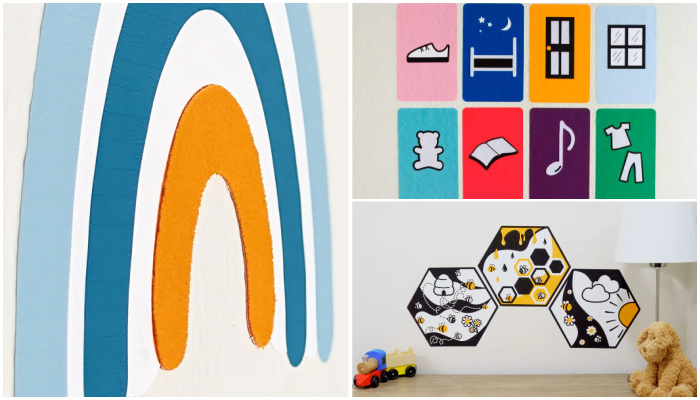
Parenting
Sensory Wall Art: 5 Tips to Create a Room Your Blind or Low-Vision Child Will Love
Even if your child can’t see their surroundings, personalizing and decorating their room with thoughtful, sensory-friendly design can make a big difference in their confidence, independence, and joy.
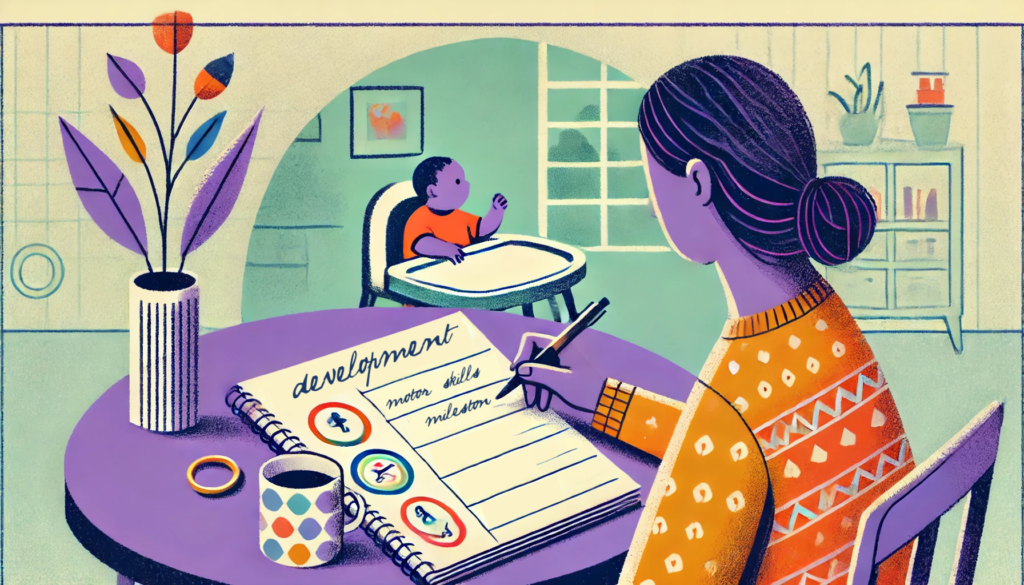
Development, Special Needs
How to Track Milestones for Developmentally Delayed Babies
Parents of developmentally delayed babies can explore practical tools and strategies to track milestones, celebrate progress, and support their child’s unique developmental journey.

Fine and Gross Motor
5 Alternatives to Tummy Time for Babies with Motor Development Challenges
Does your baby struggle with tummy time due to motor development challenges? These alternatives to tummy time will offer the same benefits.